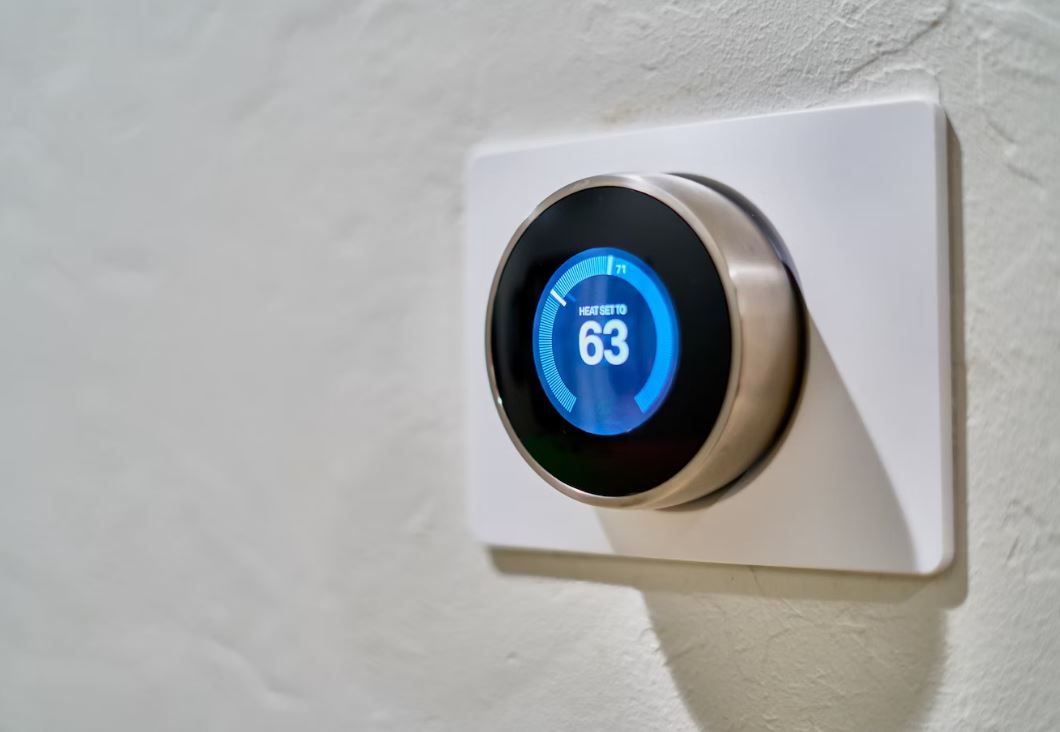
Are you tired of struggling to keep your home at the perfect temperature? Do you find yourself cranking up the heat when it gets chilly and blasting the AC when it’s too hot, despite feeling like it never makes much difference? Mastering your home’s climate is no easy task, but with some simple tips and techniques, you can maintain an optimal temperature throughout your household! Read on for essential advice on effectively managing your home’s fluctuating temperatures.
Factors to Consider When Setting Your Home Temperature
When setting the temperature in your home, the task can seem daunting. But, fear not! There are a few key factors to consider that can make the process a breeze. First, take note of the season and adjust accordingly. For example, in the winter, you’ll want to set the temperature higher to combat the cold weather. Second, consider the time of day and your daily routine. Are you typically home during the day or at night? Adjust the temperature accordingly to ensure that you’re comfortable when you’re around. Lastly, take note of your comfort level. It’s important to find a temperature that isn’t too hot or too cold but just right. By taking these factors into consideration, you’ll be well on your way to finding the perfect temperature for your home.
Why Proper Insulation Is Important for Maximizing Temperature Control
Proper insulation is one of the most important factors to consider when controlling the temperature in your home. Whether you’re dealing with freezing winters or sweltering summers, ensuring your home is adequately insulated can help you save on energy costs, maintain comfortable indoor temperatures, and increase the longevity of your heating and cooling systems. Insulation works by preventing the transfer of heat between inside and outside spaces, which means in the winter, the heat stays inside where it belongs, and in the summer, it stays outside. Not only will this keep your home more comfortable year-round, it also reduces your overall carbon footprint, making it an all-around smart choice for any homeowner looking to save money and energy.
Tips for Programming Your Thermostat Efficiently
If you want to save money on your energy bill, programming your thermostat efficiently can go a long way! First, consider your schedule and when you are typically in and out of the house. Setting your thermostat to a comfortable temperature at home and lowering it a few degrees when you’re out can save you a significant amount over time. Another tip is to avoid setting extreme temperatures – not only will this use more energy, but it can also put unnecessary strain on your HVAC system. Finally, take advantage of your thermostat’s features, such as pre-programmed settings or the ability to adjust the temperature remotely through your phone. With these tips, you’ll be well on your way to a more efficient thermostat and a lower energy bill!
Benefits of Installing a Smart Thermostat
Are you tired of constantly adjusting your thermostat to maintain a comfortable temperature in your home? Look no further than a smart thermostat. Not only does it provide convenience with its ability to be controlled remotely through your phone, but it also leads to significant cost savings on your energy bill. With its intuitive programming capabilities, a smart thermostat can learn your daily routine and adjust the temperature accordingly, eliminating the need for manual programming. Its integration with other smart devices in your home, such as Amazon Echo or Google Home, allows for seamless voice control. Upgrade to a smart thermostat today and experience the technology benefits while also contributing to a greener planet.
Strategies for Reducing Heat and Cold Losses in Your Home
Winter and summer can be tough seasons to manage indoors. Keeping your home comfortable can be costly, thanks to heating and cooling bills. Fortunately, there are several strategies you can employ to reduce heat and cold losses in your home. One such strategy is to seal any gaps or cracks that allow drafts to enter the space. Another strategy is to add insulation to your walls, ceilings, and floors. You could also install a programmable thermostat to control your heating and cooling system more efficiently. By employing these strategies, you can reduce energy bills and enjoy a more comfortable home throughout the year.
Troubleshooting Common Temperature Problems in the Home
Maintaining a comfortable temperature in your home is essential for a happy and healthy living environment. However, sometimes our heating and cooling systems can act up, leaving us wanting to understand the cause of the problem. Luckily, many common temperature issues can be resolved with a little troubleshooting. If you notice your home is not cooling or heating as it should or hear strange noises from your HVAC system, don’t panic! You can take a few simple steps before calling in the experts. By checking your thermostat settings and air filters and inspecting the HVAC unit, you can pinpoint the issue and fix it yourself. Not only will this save you money, but it will also give you a sense of accomplishment knowing you can solve the problem on your own.
If you’re constantly struggling to maintain a comfortable temperature in your home, it might be time to call in the professionals. An HVAC company like Turnbull Heating & Air Conditioning can help diagnose and repair any issues you may be facing with your heating or cooling system. While it might be tempting to try and fix the problem yourself, it’s important to remember that HVAC systems can be complex and delicate. A professional technician has the knowledge and expertise to safely and effectively make any necessary repairs. By enlisting the help of an HVAC company, you can achieve optimal comfort in your home and save on energy costs in the long run. Don’t suffer through another sweltering summer or freezing winter — call in the experts and get back to enjoying your home in optimal comfort.
All in all, setting your home’s temperature is an important part of keeping a comfortable living environment year-round. Whether you are using a traditional thermostat or have gone the extra mile and installed a smart thermostat, if your HVAC system has been properly insulated and maintained, it is possible to get the desired results. If you are experiencing any common temperature problems at home, as outlined in this post, there may be step-by-step solutions that you can implement on your own. If problems persist, it would be wise to contact a certified heating and cooling professional for additional advice. Knowing the factors that influence the temperature in your home is essential when aiming to create an ideal atmosphere in which you can relax and restore.


